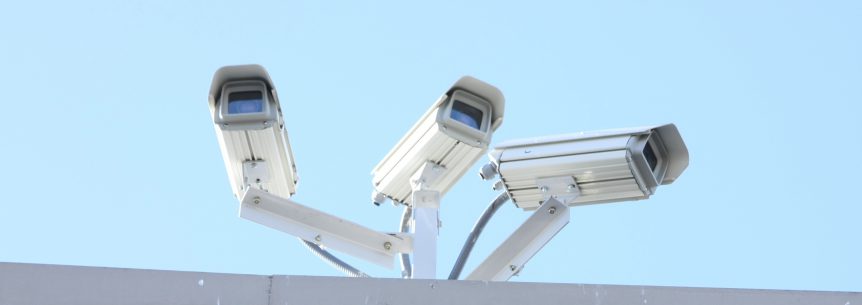When choosing a CCTV system to monitor the security of your vessel, there are a few things to account for. Here I will discuss some of the common questions regarding Network IP Cameras and NVRs (Network Video Recorders).
Analog Cameras & DVRs
To begin with I would like to differentiate between analog and IP cameras. This refers to the connection of the camera, rather than the inside working of the camera. Analog camera, in most cases, are simple passive units that send their video signal via coaxial cable back to a “DVR” or Digital Video Recorder. As the name says this unit records the signal received and may also transcode the signal into another format (digital) for on passing to another system and for viewing. The unit may also contain software for managing the camera settings and camera options.
Without a DVR you would not be able to record or view recorded video. Essentially the DVR is the brains of an analog security system. Analog cameras tend to have a separate 12 or 24-volt power source.
IP Cameras
Newer cameras tend to be IP cameras connected to a computer network and are individual units that are accessed via a dedicated camera IP address. In effect the camera has its own brain and requires no central control for basic functionality. The camera may also have onboard recording via the use of an SD card. In essence they are a “smart” device connected via the same type of cable used to connect your computer or other smart “internet” device. And as with most current network devices, it may even be wifi enabled. IP Cameras may also be powered via the ethernet cable using POE (Power over Ethernet) enabled Switches.
Essentially you can have 1 or many IP cameras on your network, each IP camera being an independent unit, with its own independent interface and specific settings.
Viewing Multiple IP Cameras Simultaneously
So, thus when you have multiple IP cameras, you will want a central method of viewing them in a Multiview display, and possible a central recording system. For this we use an NVR (Network Video Recorder). An NVR is a hub where all your IP cameras get aggregated to view live, record and store material, and permit for later playback/viewing.
Compatibility between IP cameras
Because each IP camera is an individual unit, and each manufacturer has their own methods of implementing the use of the camera, not all IP cameras compatible with all NVRs.
Your best option is to buy a IP cameras and NVR package. This means that the manufacturer of the cameras specifically designed the NVR to be compatible with the user interface, software, and options that are embedded in the camera itself.
So if you were to buy ten XYZ IP cameras along with an XYZ NVR, you can expect that the cameras will work seamlessly with the NVR. This also means that all of the camera options and functionality are configured and controlled through the NVR itself. There is no need to go to each individual camera and prepare the initial setup or for any later changes. Buying a package like this allows for a fast and convenient setup as well as the ability to streamline the maintenance and usability of your new security camera system.
Camera changes
But what happens when you already have IP cameras and want to add further cameras, or replace old ones? What if you wish to upgrade the NVR?
As mentioned, different manufacturers use different protocols for communication between the NVR and the camera. Even a single manufacturer may have changed protocol over time. Here it is good to ensure that if you choose on a manufacturer, to ensure that it uses a common protocol shared with other manufacturers. An example of this would be the “ONVIF” protocol. This way you can ensure that a ONVIF compatible camera is able to communicate with an ONVIF compatible NVR. This means that you are guaranteed to get video output from each camera to the NVR. Although you will also find that not all of the cameras functionality will be available directly through the NVR.
In this case you will also find that most likely find that you will configure each camera individually prior to installing or mounting it. This will avoid potential troubles and hassles at the time of connecting it to the NVR.
When configuring, these are the setting you should have to hand;
- Camera IP address (Use a unique IP address, and disable the DHCP setting if it has this).
- Main Stream Resolution and Extra Stream Resolution
- Date & Time Format
- Camera Label
- Should you enable Motion Detection (consider what uninteresting movement could accidently activate the camera)
- Motion Masking (blanking out uninteresting areas that should not activate the camera)
- Color and Contrast settings
- IR Configurations
and finally change any default passwords!
Also remember to ensure the camera is running the latest firmware to ensure security and protect against unwanted access.
This article written by Tim Gorter, teletechnics.com. Tim is a freelance Audio/Video and Control integrator working on Superyachts and private residential sector.


